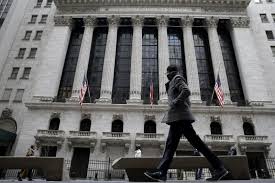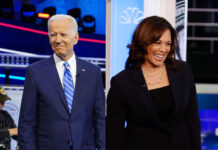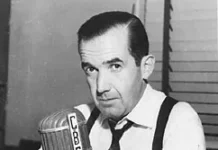This article was originally published in January 1995 in the newsletter, Investing Online. An earlier, shorter version that broke the news of the bonus paid to former NYSE Chairman John Phelan was published in Futures & Options World, in 1990. The article was then picked up in the Feb. 18, 1991 issue of Investment Dealer’s Digest. From there, it made it a few weeks later to page 3 of the Wall Street Journal.
This circuitous journalistic route illustrates the gap between important news broken by trade and general audience publications and selective myopia some major publications have when confronted with the option of publishing sensitive information about major institutions.
In this case, it was an important story because it was the first time executive compensation and bonuses for an NYSE executive were ever publicly questioned. Had more financial journalists noted this event, it may have prevented the successive wave of huge executive compensation payments that have distorted the executive versus employee salary gap, which continues today. In November 2020, the NYSE is again in the news since its chairman, Jeff Sprecher, was involved in an insider trading event. After an investigation. the US Justice Department dropped the insider trading charges against Sprecher and his wife, Georgia Senator Kelly Loeffler.
Wall Street’s Biggest Secret: Did the former NYSE chairman receive two bonuses totaling $19.5 million?
When it comes to public disclosure, there are two sets of standards: those covering publicly-traded U.S. corporations and those covering the nation’s stock exchanges.
While America’s corporations must file regular reports with the SEC to keep shareholders apprised of critical developments, the nation’s stock exchanges have carved out a unique regulatory niche where they often operate outside public scrutiny, including that of the SEC.
Take the case of executive compensation. While the SEC has strict guidelines for executive compensation and bonus reporting for the nation’s publicly-held corporations, the exchanges where most of the significant corporations’ stock is listed do not report salaries and bonuses at all. It is perfectly legal and well within the exchange’s regulatory domain.
While acting in this domain, John Phelan, the former Chairman, and CEO of the New York Stock Exchange, received two bonuses, which alone totaled almost $19.5 million. Further, this does not include other annual bonuses he received during his six years as the Big Board’s top executive.
According to former employees, Phelan received about $10 million when he retired in February 1991 after serving as NYSE chairman and CEO for six-and-a-half years. Earlier, in late-1987, he received a $9.5 million bonus for his work associated with managing the stock market crash of October 1987 and its aftermath. All told, former employees estimate Phelan received about $23 to $25 million in bonuses alone–excluding salary–during his tenure as NYSE chairman and CEO.
While awarding these bonuses was perfectly legal and well within the NYSE’s governing structure, the size of these awards and the fact that they were done secretly points out the double-standard which exists between the nation’s stock exchanges and the corporations whose stocks are listed there for trading.
Taken individually, the two bonuses would rank among the top three bonuses paid to CEOs of public corporation executives during the years in question. According to Forbes magazine, which conducts an annual compensation survey of the top 800 CEOs of U.S. public corporations, a bonus of $10 million in 1989 would make it the third-largest bonus awarded in that year, while a $9.5 million bonus in the fiscal year 1992 would make it the second-largest bonus awarded for the period, a Forbes spokesman said. (Forbes said it did not begin to separately break out salary and bonus figures for its compensation survey until 1992.)
[Note: Former-NYSE Chairman Richard Grasso received the largest NYSE bonus ever–$140 million in 2003–but it involved a court fight and the sentencing of the NYSE’s director of human resources, Frank Ashen, to jail for lying to the NYSE Board. The case was prosecuted by New York AG Elliott Spitzer.]
The salaries and bonuses of CEOs of publicly-held corporations must be published in annual reports and proxy statements.
Individually, Phelan’s bonuses would be the largest ever awarded in the 200-year history of U.S. exchanges. But what makes the bonuses more astounding is that the NYSE is a semi-public institution with a board of directors comprised of public governors whose task is to ensure that the NYSE is not run strictly for the specific interests of its members, staff, and the securities industry.
But because the NYSE falls into a unique corporate category–a member-owned, non-profit corporation–it is not under any obligation to disclose executive compensation packages to any outside organizations, including the SEC, the investing public, or even its own members. Essentially, the NYSE regulates itself.
Still, the size of the former NYSE chairman’s bonus package would make it the biggest ever awarded to an exchange official. Today, the NYSE refuses to discuss the bonus–its size or even the fact that it was even awarded–which puts it at odds with similar executive compensation and bonus reporting requirements facing publicly-traded corporations that are listed on the NYSE.
Aside from the size of the bonus, what many industry observers also find interesting is the basis on which this size bonus was awarded. During Phelan’s tenure as president and chief operating officer from 1980 and CEO, and Chairman (from May 1984 until 1991), the NYSE failed to successfully launch a single new investment product or division. This failure occurred during the decade which witnessed the largest exchange-listed product proliferation in modern financial history; a time when equity options, warrants, equity derivatives, stock indexes and financial futures exploded at other exchanges.
Further, a portion of the bonus package also came from the role Phelan played in creating the New York Futures Exchange, the NYSE’s wholly-owned futures trading unit, which saw its seat prices plummet from a high of $60,000 in 1982 to $100 in 1991. In an extraordinary move in exchange history, the NYFE was transferred from the NYSE to the New York Cotton Exchange in January 1994.
While Phelan’s bonus package clearly did not violate any federal laws or regulations and was well within the operational scope of the NYSE, the events surrounding the bonus package highlight a number of key issues to investors:
Why has the SEC adopted a double standard with respect to executive pay disclosure rules in the private versus the nation’s exchanges?
New SEC rules require U.S. corporations to inform investors about the compensation of a company’s top five highest-paid executives and provide a detailed signed explanation from the Board’s compensation committee. Shareholder proxy statements began to carry this new information in January.
These rules also show the apparent inconsistency which exists between the role of independent directors who sit on the boards of publicly-listed corporations and the role of the eight public directors who sit on the NYSE board. Eight of the NYSE’s 16 directors come from the public sector. But what is the role of these public governors and what knowledge did they have, if any, of ex-chairman Phelan’s bonus?
Where Were the Regulators?
The SEC Division of Market Regulation, which is responsible for monitoring the activities of the nation’s eight securities exchanges, had no comment on the bonus, its size or even if it ever happened. But discussions with former SEC staffers said they most likely were never informed about the bonus or the amount until after it appeared in the newspaper. The SEC did not return calls regarding this article.
Why the Double Standard on Reporting CEO Salaries?
Under the Securities Act of 1933, which created the SEC, exchanges began the gradual process of carving out their own regulatory domain. They would eventually be able to perform their own self-regulatory functions. This would include monitoring licensing and sales practices, penalizing errant brokers, and in general, balancing the needs of the industry against those of the individual investors.
The exchanges themselves, however, were categorized by the SEC as Designated Self-Regulatory Organizations (DSROs) that could pass rules affecting their members and trading practices and arbitration procedures. In theory, the SEC still had jurisdiction over the exchanges, but in practice, the government often just signed off on an exchange’s self-regulatory plan without any further intervention. Internally, the exchanges managed their affairs without any direct input from the SEC.
In terms of salary and compensation practices, the SEC has two distinct positions. For public corporations, salary and bonus disclosure is mandatory and must be communicated to shareholders in proxy statements. But because exchanges are member-owned, non-profit corporations, the SEC has no disclosure provisions.
But given the fact that exchanges are quasi-public bodies, who as self-regulators, often hold themselves up to higher ethical standards, why does this discrepancy exist?
“That’s a good question,” according to David Ruder, who served as SEC chairman from 1987 to 1989 and was the former dean of the Northwestern University Law School. “The reason you want disclosure to shareholders in public corporations is that shareholders may feel they want to get the most information possible so they can measure pay against performance. It’s a way of giving the public some method of evaluating the CEO’s performance,
“If you look at the executive compensation requirement that the SEC has, you must show what the performance of the company has done in relation to other companies,” Ruder said.
But in the arcane area of exchange regulation, the general problem is in evaluating the performance of the Board of directors, Ruder continued. As an example, when Ruder served on the Board of the NASD, he was told not to give salary figures for the NASD president. “But I satisfied myself by asking the members of the compensation committee if they had properly reviewed what was happening to find out how well this person was doing.” But even then, the discussion was very controlled since the compensation committee is selected by the Board, but with strong input from exchange management in coordination with the chief elected officer of the Board.”
As a former SEC chairman, Ruder said the commission “most likely had no knowledge of the bonus since they trust the exchange to monitor itself.”
“I have often wondered why the salaries of these DSROs were not made public since they are quasi-public organizations.” He said he would favor the disclosure of compensation packages to stock exchange officials.
According to executive compensation experts, corporate bonuses can be judged by a number of criteria, such as comparing company versus industry performance or against compensation of comparable corporations. But because the NYSE has a unique status as both competitor and self-regulator, it has imposed rules (such as Rule 390) to protect its franchise, thus making compensation comparisons difficult to make. When the issue of one of Phelan’s bonuses was raised earlier, the NYSE’s Grasso defended it as being in line with other executive compensation plans. But he never elaborated on the specifics of Phelan’s compensation plan.
The Role of Independent Directors
Historically, placing public directors on the NYSE was done to restore public confidence in America’s capitalist centerpiece, the NYSE, during its most bleak period in the late-1930s. This was the time when former chairman Richard Whitney (who served as NYSE president from 1930-1935), was considered one of the most arrogant foes of federal securities regulation.
Writing in The House of Morgan, author Ron Chernow recounts how Whitney “personified the smug arrogance of the ancien regime on Wall Street. When he (Whitney) testified about securities reform before the Senate Banking and Currency Committee in 1932, he lectured the senators on the need for a senatorial pay cut. Opposing creation of the SEC, he (Whitney) told Pecora’s investigators, ‘You gentlemen are making a great mistake, The (NYSE) Exchange is a perfect institution.'”
Whitney continued to oppose any reform until eventually SEC Chairman William O. Douglas, who succeeded Joseph P. Kennedy as the first SEC chairman, reached his breaking point. In the fall of 1937, Douglas told NYSE leaders: “The job of the regulation’s got to be done. It isn’t being done now, and, damn it, you’re going to do it or we are.” With the New Deal steamroller bearing down, NYSE Chairman Charles R. Gay became convinced that this SEC chairman was serious. Gay did what any exchange executive did: He appointed a committee to study reform. In January 1938, the committee recommended: “a complete revamping” of the NYSE, including having a full-time paid president, professional staff, and non-member governors.
It was in that atmosphere that public governors were installed at the NYSE. The role of public governors was reinforced in 1975 when regulators again mandated a public orientation towards protecting the investing community.
NYSE public governors, who served on the Board when Phelan was awarded his bonus, would not comment.
The Benefits of Self-Regulation
The SEC recently adopted stringent new provisions to enforce executive pay disclosure rules at America’s publicly-held corporations. Today, shareholder proxy statements must contain charts showing the compensation for the corporation’s top five highest-paid executives, plus a detailed explanation from the corporate Board’s compensation committee.
The responsibility for monitoring the activities of the nation’s eight securities exchanges is under the jurisdiction of the SEC’s Division of Market Regulation. Under the current system of the exchange as a DSRO, the SEC merely signs off on an exchange’s plans to enforce its own rules and regulations affecting trading practices and regulations.
But because exchanges have a unique status in the regulatory landscape, they are free to pursue infractions against individual firms and brokers but are held unaccountable in others, including their own personnel policy and compensation.
This is the blind spot in the SEC’s regulatory perspective. According to the agency’s 1991 Annual report, the SEC Division of Market Regulation oversaw the activities of the nation’s eight stock exchanges, 8,600 broker-dealers, the OTC markets, and 15 clearing agencies. Under the SEC’s full disclosure system, administered by the SEC Division of Corporate Finance, the system is supposed to work “to provide investors with material information, foster investor confidence, contribute to the maintenance of fair and orderly markets, facilitate capital formation, and inhibit fraud in the public offering, trading, and voting and tendering of securities.” Nowhere is it responsible for examining executive compensation.
The Fiduciary Interest
While executive compensation issues seem to be outside the purview of the SEC and the NYSE’s public directors, large public pension funds, meanwhile, have expanded their interest into corporate governance, specifically as it relates to executive compensation.
Both TIAA-CREF and the California Public Employees’ Retirement System have issued policy statements on the topic. TIAA-CREF, for example, advocates a “pay for performance” system “to ensure equitable treatment between the shareholders and corporate management.” The fund also advocates adequate disclosure of top executive compensation and “supports the spirit of the SEC rules on enhanced executive compensation disclosure and compensation committee reports to shareholders.
On social responsibility issues, TIAA-CREF also noted that boards of the corporation in which it does business and invests should maintain open channels of communication.
In a report prepared for Calpers, Graef Crystal of the University of California, Berkeley, noted that a “danger signal” about excessive executive compensation occurred when an “ultra-high total package compared to that offered by other companies [exists] after taking into account considerations of company size and performance.”
While these guidelines exist for publicly-traded corporations in which pension funds invest, they were created because the funds “acknowledge a responsibility to be an advocate for improved corporate governance and performance discipline.”
While these major public funds have scoped out publicly-held corporations to see if they are run for the benefit of shareholders, these funds may be in the best position to break down the double standard.












[…] it shows that the top-level NYSE executives are capable of lying to the NYSE board in order for its chairman to receive a bonus of about $187 million, the largest […]